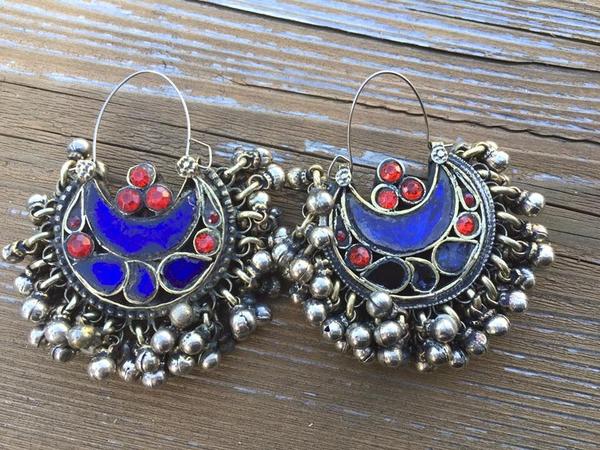By John Ewoldt
Star Tribune (Minneapolis)
WWR Article Summary (tl;dr) The internet and speedy international shipping are allowing entrepreneurs like Nila Chaktaborty to close the gap between shoppers in the U.S. and fashions from other countries, including those by designers in India.
Star Tribune (Minneapolis)
Surging numbers of Americans with roots in India, including Minnesotans, have Nila Chakraborty seeing red, green, yellow, blue and black.
Her Plymouth-based online business ShopBollyWear.com has been doubling its sales every month since she launched it in April.
She’s selling silk, chiffon and cotton clothing, some hand-painted and hand-stitched.
“I grew up in the ’80s seeing the Bollywood actors looking so grand and elaborate, but you had to travel to India to get those fashions,” she said.
Now, the internet and speedy international shipping are allowing entrepreneurs like her to close the gap between shoppers in the U.S. and fashions from other countries, including those by designers in India.
She supplies customers with special occasion and ready-to-wear saris (a 6-foot-long decorative wrap), lehengas (skirt and blouse combo), kurta pajamas (tunic and trim slacks) and statement jewelry.
Chakraborty has zeroed in on the surging number of immigrants from India and nearby countries, including Pakistan and Bangladesh, who have come to the U.S. for work in relatively high-paying tech jobs and are eager to preserve traditions from home.
In addition, she says, “There are huge second and third generations born in America not getting married in India. We help them with that.”
Chakraborty, 39, is part of that earlier wave of immigration, having been born in Kolkata, India, and raised in Pittsburgh in the 1980s. She worked previously as an employment recruiter and later a wedding planner.
Chakraborty said it’s still common for her customers to travel to India to wear their festive attire, especially for weddings.
So why not wait to pick up saris and kurtas once in the country of origin?
“It’s an ordeal getting there,” she said. “A 32-hour trip, jet lag, traffic and the time difference. It’s not worth it to wait until you’re there.”
About 10 percent of ShopBollyWear’s customers are from Minnesota, a state that ranks 11th in the country in number of Asian Indians. Nationwide, there are about 4 million Asian Indians, a bit more than 1 percent of the U.S. population.
Chakraborty is projecting revenue near $1 million in her second year.
“We carry more than 1,200 different items of clothing and jewelry,” she said. “What makes us different from much of the competition is that we carry items for men and children, too.”
Baishali Bakshi of North St. Paul had purchased Indian clothing from various websites before, but last year she switched to ShopBollyWear.com because of its local focus. “I like to know who I’m buying from,” Bakshi said. “I can talk to her if I need to. It’s convenience mostly.”
Occasionally, Chakraborty has a local customer with an emergency who visits her house, where she keeps a small number of items on hand. For the most part, her company sticks with online orders that trigger a shipment from India, which takes a week to reach Chakraborty. She then does a quality check before forwarding the item on to a customer.
She said she has no plans to venture into bricks and mortar.
One local retailer who did, Noelin Soosaithananda Ambrose of NM Designs in Minneapolis, believes that her shop eliminates the issues of buying online. “People come to me because their online garment doesn’t fit or isn’t the right color,” she said. She said more than a dozen sellers of Indian garments in the Twin Cities operate from their home without a formal storefront, but she’s been running NM on Central Avenue since 1997.
Soosaithananda Ambrose estimates that 30 percent of her local clients are not Indians. However, they like the culture of India and want to wear the brightly colored clothing to parties and special occasions.
“They can multi-task outfits so they can wear them for different types of occasions,” she said.
Both online and storefront owners have yet another form of competition to consider — rentals and consignment. Many of the special-occasion garments worn by women are only worn once, especially in the age of social media. “Facebook has really helped us,” Chakraborty said. “Most women can’t repeat an outfit after they’ve posted selfies of it on Facebook.”
In the age of reduce, reuse and recycle, many of those one-and-done outfits, which can easily cost $300 and up, are finding their way to eBay, consignment shops and more.
Didiswardrobe.com buys and sells used Indian wear while sites such as Borrowitbindaas.com let women and men rent or buy clothing, accessories and jewelry.
“Rent or buy the latest Indian apparel with free return shipping and leave the custom tailoring and dry cleaning to us,” the website says.
Chakraborty said she considered offering rentals on her site but decided to build a solid customer base and brand first.
“We want customers to trust the quality before branching out,” she said.














































































































































































































































































































































































